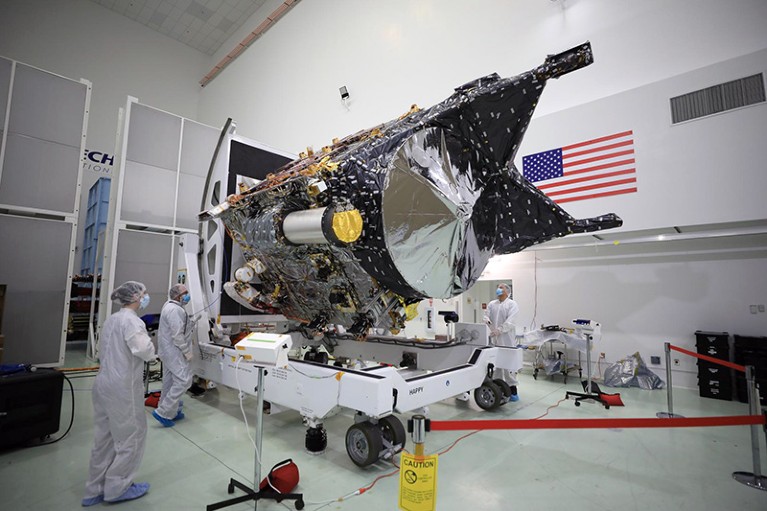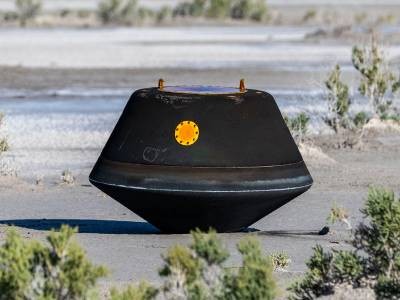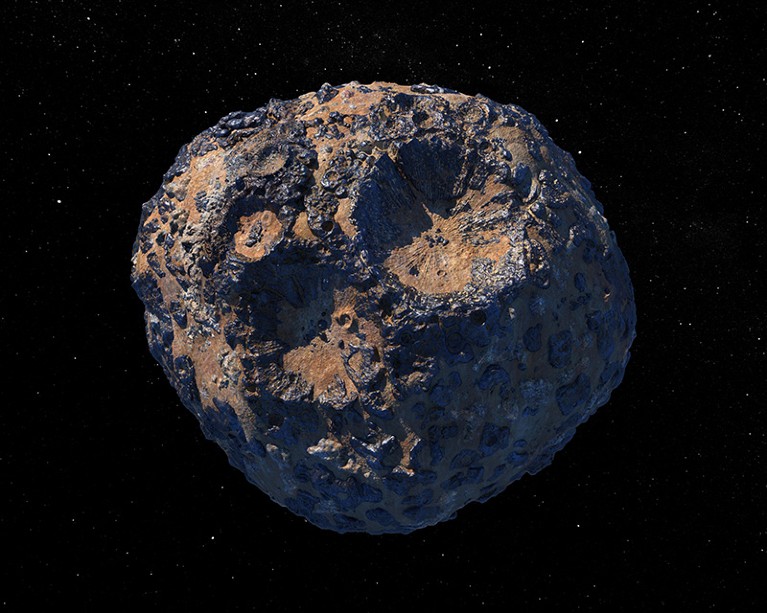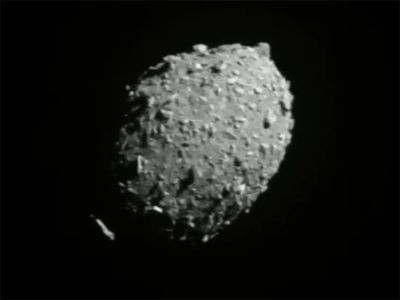
Engineers and technicians prepare the Psyche spacecraft for launch at a clean room near NASA’s Kennedy Space Center in Florida.Credit: NASA/Ben Smegelsky
A US$1.2-billion NASA spacecraft launched from Florida today on a 3.6-billion-kilometre journey to a metal-rich asteroid that is unlike anything scientists have studied before.
Its destination is a space rock called Psyche — the largest metallic object in the Solar System. Scientists think this asteroid could be the core of a planet that never finished forming. If so, then studying Psyche will be like getting a time traveller’s look at how the Solar System’s planets formed billions of years ago.

Special delivery! Biggest-ever haul of asteroid dust and rock returns to Earth
Researchers aren’t completely sure how much of Psyche is metallic, but according to their measurements, “at least part of the surface has got to be actually metal”, says Lindy Elkins-Tanton, a planetary scientist at Arizona State University in Tempe, and the mission’s principal investigator. “That’s the key thing — we want to see that metal surface.”
It will take a while to get to the asteroid, though. The spacecraft, which is also named Psyche, isn’t due to arrive until 2029.
In the meantime, researchers and space enthusiasts are celebrating the ‘heavy metal’ launch: Elkins-Tanton’s team has joked about naming any geological features it finds on Psyche’s surface after heavy-metal bands. And the former lead singer of the metal group Pantera released an ode to the mission, singing that Psyche is “an asteroid of mighty power — this is NASA’s finest hour”.
Space metal
Table of Contents
Of the million-plus asteroids in the Solar System, most are composed of rock, or some mixture of rock and ice. Only a few of them — a poorly understood collection known as M-type asteroids — seem to be made mainly of metals, such as iron and nickel. At around 220 kilometres across, Psyche is the largest of the M-type asteroids.

Scientists estimate that Psyche, an asteroid that is about 220 kilometres wide, consists of between 30% and 60% metal.Credit: NASA/JPL-Caltech/ASU
That makes it a strong candidate to be the exposed core of an ancient protoplanet. Researchers think that more than 4.5 billion years ago, soon after the Sun was born, material swirling around our star coalesced into the building blocks of planets. Heat inside these protoplanets partly melted them, allowing their components to separate and form metallic cores, surrounded by rock. Collisions with other space rocks might then have stripped away their rocky exteriors, leaving bare, metal-rich hearts whizzing through space. One of these could be Psyche.
Earth has a similar iron-rich core, but it is buried under thousands of kilometres of rock. So studying Psyche could be a window into understanding planetary interiors, which scientists can’t access directly.
The potato-shaped Psyche orbits the Sun in the main asteroid belt that lies between the orbits of Mars and Jupiter. The spacecraft will fly past Mars in 2026, using the planet’s gravity to speed up a rendezvous with Psyche, arriving there in 2029. It will then spend more than two years orbiting the asteroid, moving progressively closer to the surface as it gathers data on Psyche’s magnetic field, gravity and mineralogical make-up.
For the love of metal
Planetary scientists used to think that Psyche could be composed of as much as 90% metal. But observations with ground- and space-based telescopes gradually showed that it must also contain substantial amounts of rock or other material. The latest estimates suggest that Psyche consists of between 30% and 60% metal1, and that its density is somewhere between that of a pure-iron meteorite and that of a pure-rock meteorite.

This spacecraft just smashed into an asteroid in an attempt to change its path
“We don’t quite know what it is that’s there along with the metal,” Elkins-Tanton says. If Psyche turns out not to be the metallic core of a protoplanet, another possibility is that it is made of primordial material from the Solar System’s formation that never melted and separated out into layers2.
Recent observations with the James Webb Space Telescope, reported at a planetary-science conference in San Antonio, Texas, on 2 October, hint that Psyche could even contain water, which might be bound up in minerals mixed with metallic grains.
All possibilities are on the table for what Psyche could be — that’s what makes the mission so intriguing, says Katherine de Kleer, a planetary scientist at the California Institute of Technology in Pasadena, who has studied the asteroid3. “There’s a very good chance that we’re going to be surprised,” she says.
The mission ran into several stumbling blocks as it was being developed, including delays related to the COVID-19 pandemic, and a staffing shortage at NASA’s Jet Propulsion Laboratory in Pasadena, California, which has a key role in building the spacecraft. Those problems pushed back the mission’s expected arrival at Psyche from 2026 to 2029. Then, in the final run-up to the launch from the Kennedy Space Center in Florida, engineers discovered problems with the nitrogen thrusters, which are used to control the spacecraft’s orientation as it flies through space and orbits Psyche. To work around the problem, the probe will have to fire the thrusters at a lower power level than was originally planned, for longer periods, to avoid damaging them.
